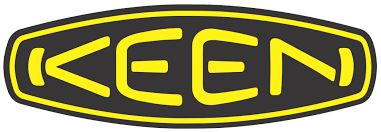Last spring I performed a major Solar Power upgrade on the Airstream. I added 405 watts of solar panels and a solar charge controller to recharge our batteries and extend our boondocking options.
When we arrived in Idaho at my brother’s place last May, I began the second phase of that upgrade. I put in larger batteries, installed an inverter, and upgraded both the DC and AC wiring to suit our purposes. I did all three upgrades at the same time, but I’m going to talk about them individually for sanity preservation.
.jpg)
When we bought our Airstream from the previous owner it was 5 years old and still packing the original batteries from the factory. Located in the battery box in the A-frame of the trailer, these two 12 volt batteries provided roughly 75 Amp-Hours of usable electricity when not connected to an AC power source.
Having two of these deep-cycle 12 volt batteries is a common setup, and it is sufficient for many weekend campers. You can do a single night in almost any weather, and with careful use you can go two nights without any power. For people looking for minimal dry-camping or just to provide power while in transit, this is a fine setup.
However, we had reached the point where we wanted more battery capacity. We are fairly heavy power users with two laptops, phones, tablets, and cameras to keep charged up. There are many options for such an upgrade and I’m not going to detail all of them. Lithium batteries are awesome but expensive, AGM batteries are expensive but only have a few advantages, and wet-cell batteries are cheap but require maintenance and must not be allowed to ventilate into the living space.
After researching, we chose to install two T145 Trojan Golf Cart batteries. We mostly did this following the example of Dave Zimmerman, whose own power upgrade provided plenty of insight and research for us to build upon. The T145 battery is the largest golf cart battery Trojan makes, and they are fairly large and heavy. They are also fairly cheap when stacked up against the options.
The cheapest price we found was online from a place in Southern California, but shipping was expensive. We really lucked out here with some family help. My father was driving right past the warehouse just two days after we had made our decision, and he modified his schedule slightly to pick them up. He transported them up to the Bay Area and passed them off to my older brother, who drove them from California to Idaho (regular work route for him) and kept them there until we showed up a few months later with the Airstream. Our rube-goldberg shipping kept costs low, and we really did get a good price at around $400 for the set.
The T145s have 230 amp-hours if drawn over a longer period. These batteries are also built to take a bit more abuse, so we figure we have 150 usable amp-hours in the batteries, for double our previous capacity. Under real-world use since we completed this battery install, our power lasts much longer even with very little solar input. We can now regularly stay someplace for 3-5 days with sub-perfect solar coverage. With great solar coverage, we are back to full charge before noon every day.
The new batteries don’t quite fit into the battery box on the Airstream as is. Dave used some c channel to extend his box top upwards by two inches. We didn’t want to block the front cargo hatch by doing so, and instead wanted to extend our box downward. Luckily, my awesome, battery-toting brother also happens to be an accomplished welder and was willing to help a brother out.
.jpg)
All of the work was done in the nicely proportioned driveway, just feet from my brother’s workshop.
We began by removing the old batteries and pulling the wiring out of the box. I also disconnected and removed the propane tanks, as I wanted them nowhere near the welding and grinding that would take place! Removing them also opened up some more room which helped the process a little.
.jpg)
Our first major step was to cut the bottom off the old battery box. Using some new steel, we formed a new battery box and did a test fit. It measured up, so we continued and welded on a new battery hold-down threaded rod. This holds the batteries in place while jostling down the road. My genius brother used a t-nut with the spikes hammered flat, and welded that onto the new bottom through a hole drilled in the middle. We also cut some relief holes, and welded the new bottom onto the battery box.
After the welds were complete we did a confirmation test-fit with the batteries, and everything fit nicely! We didn’t lose much clearance on the bottom of the trailer, as the spare tire sites just behind the battery box and is a few inches lower anyway.
Some cleanup of the weld with the grinder, and we were ready to get it painted!
We painted the box in place, after generously masking off the trailer and everything else that we didn’t want painted. We started with primer, and then followed up with a few coats of dark grey paint I bought at the local hardware store. The paint selection wasn’t amazing, so the match is not perfect. The color is slightly darker and has just a little bit of sparkle in it. Even with it’s extra pizzaz, the hidden location makes it kind of difficult to spot.
.jpg)
The weld looked great, and was large enough to be very strong. My brother was not impressed, but he’s a bit of a perfectionist and was working under quite cramped conditions. I’ve had several compliments about the weld by others since it has been done.
I modified the plastic battery tray that sat under the old batteries, and cut off one side so that the new trojans would fit. With the batteries in place, it was time to complete the wiring upgrade.
The old batteries were 12 volt batteries wired up in parallel. This means that you wire positive to positive and negative to negative when joining the batteries in a bank. The new Trojan batteries are 6 volt batteries, and must be wired in series to provide the required 12 volts. This means that I added a wire that connected the positive terminal on one battery to the negative terminal on the other. The voltage across both batteries (measured from the remaining terminals) was 12 volts.
I also replaced the section of wire that ran from the batteries inside to the DC power distribution blocks. Most of my reason for doing so was my installation of a 2000 watt inverter, which I’ll talk about in another post.
I used 2/0 wire for the new cables, up from the AWG 4 cables in place from before. The cables were huge, but provide significantly low loss when pulling the amps I was planning for the inverter. I pulled out the old wire, and wired up the new one in it’s place.
.jpg)
This was a test fit BEFORE we made the battery box taller.
Each wire was terminated with a crimp connector and covered in heat-shrink tubing. The crimp connectors are large enough that you need to buy a special tool to perform the crimp. You place the wire and connector inside, and use a reasonably sized hammer to crimp the connector tight. Doing so was not difficult, though you want to be careful when you add those connectors. AWG 2/0 cable does not bend or twist easily so you want to be darn sure of the desired angle of the connector before you crimp it on. I used a sharpie to mark the angle on the cable to make it easier to line up, and it worked out pretty well.
The batteries fit well, but for extra protection I modified some battery boot covers to fit over the 4 battery terminals to prevent accidental connections.
We did the work spread out over several days, mixed in with work, fun, and other Airstream projects. Up next, I’ll talk about adding the Inverter so stay tuned for that!



















[…] Install Part III – Self Install Running Wire Solar Install Part IV – The Wire Panel Adding Bigger Batteries Installing a 2000 Watt Pure-sine Inverter Automatic Transfer Switches Cost […]